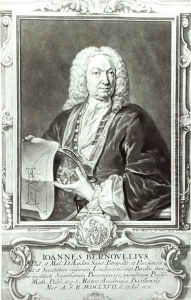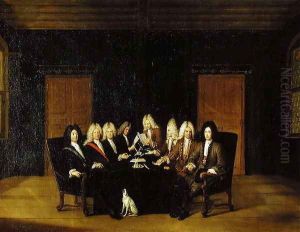Johann Rudolph the Elder Huber Paintings
Johann Rudolph Huber the Elder was a notable Swiss painter born in Basel in 1668. He was a prominent portrait artist of his time, especially known for his skill in capturing the likeness and personality of his sitters. Huber's style was influenced by the prevailing Baroque sensibilities, which emphasized dramatic expression, rich color palettes, and a sense of movement.
Huber received his early training from his father, who was also a painter. He further honed his skills by studying in Italy, where he was particularly influenced by the works of the Venetian masters. Upon returning to Switzerland, Huber established a successful career as a portraitist. He became the foremost painter in his native Basel and received commissions from many of the city's influential figures, including members of the government and clergy, as well as from the bourgeoisie.
Throughout his career, Huber's works were characterized by their fine detail, psychological depth, and the dignified portrayal of his subjects. He also occasionally painted historical and mythological scenes, but his reputation primarily rests on his portraits. His contributions to Swiss art were significant in that he helped to foster an appreciation for portraiture in a country that, at the time, was not widely known for this genre.
Johann Rudolph Huber the Elder's legacy continued through his family, as his descendants also became artists, contributing to the cultural heritage of Switzerland. He died in 1748, leaving behind a body of work that has been appreciated by generations of art lovers and historians. Huber's portraits remain valuable for their historical significance and their artistic merit, providing insight into the society and culture of 17th and 18th-century Switzerland.

